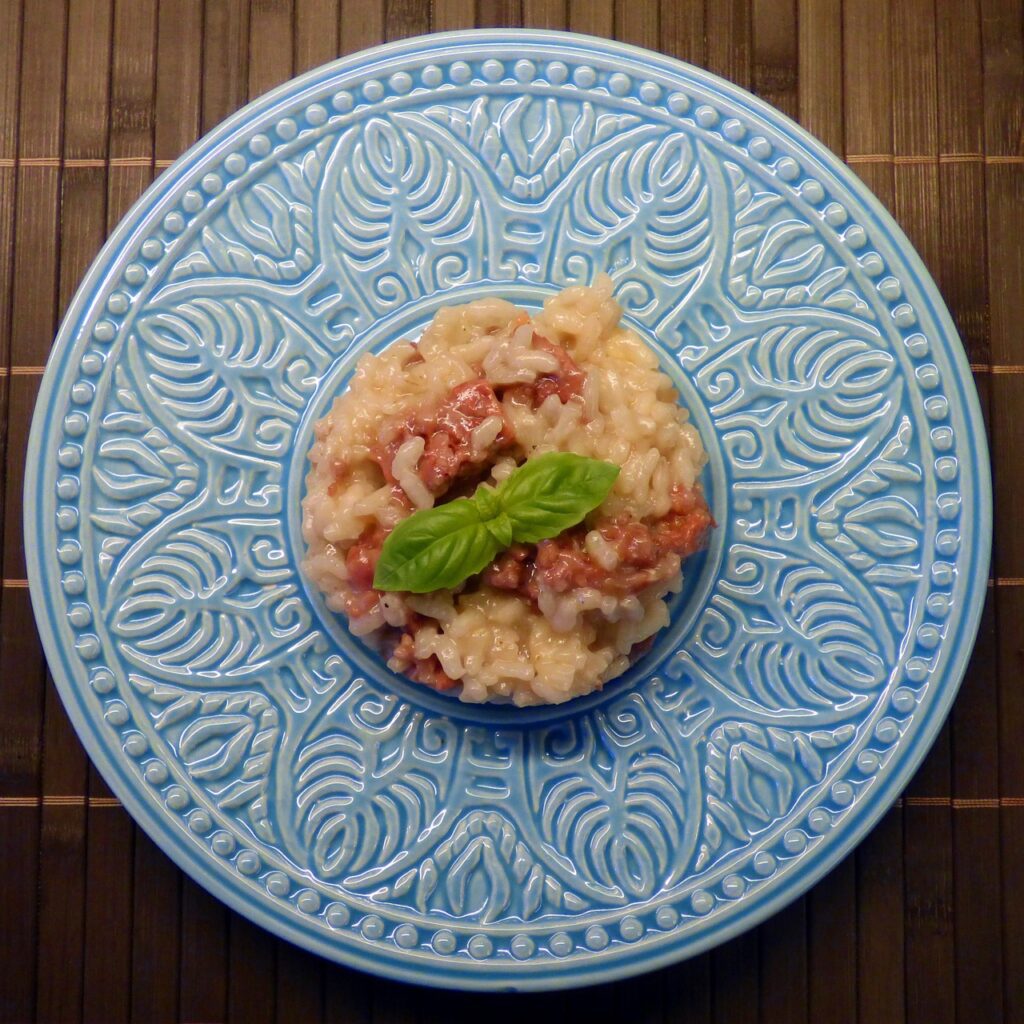How Did Rice Become an Italian Culinary Star?
The origins of rice in Italy remain shrouded in mystery, but its arrival in the 14th century, likely from Spain, marked a turning point in Italian cuisine. Thriving in regions outside of Milan due to the perfect blend of flat land, water, and humidity, rice cultivation became a successful venture. The intensive efforts that began in the 14th century have elevated rice to a staple in regional Italian food.
The Playful Beginnings of a Classic: The Story of Risotto
Risotto, a revered dish in Italian cuisine, actually began as a playful prank. The tale dates back to 1574 when a young apprentice stained glass for the Duomo di Milano. Teased for using saffron to achieve vibrant hues, he incorporated the spice into rice served at his master’s wedding. Unexpectedly, the rice became a sensation among guests, transforming into the iconic Italian food we adore today.

Deconstructing Risotto: The Four Key Components
- Soffritto: This essential base of Italian cuisine often comprises a mix of vegetables, butter, oil, and onions. Sautéed in the same pan as the rice, it sets the foundation for flavor.
- Broth: Whether homemade or canned, broth plays a crucial role. Varieties like beef, chicken, vegetable, or fish infuse distinct character into risotto.
- Flavoring Ingredient: This component imparts risotto’s distinctive taste. Ranging from vegetables to meat, truffles, or saffron—the original catalyst—this ingredient defines the dish.
- Italian Rice: Distinguished by its large grains and abundant starch, this rice absorbs liquid while retaining its firmness—a perfect canvas for crafting risotto’s texture.
Mastering the Art of Risotto: Tips for Success
Crafting authentic Italian food involves precision, and risotto is no exception. To succeed, remember these essential tips:
- Skip the Rinse: Avoid washing the rice as it preserves the necessary starch for excellent Italian cuisine.
- Select the Right Rice: Different rice varieties suit distinct recipes. Consult cookbooks to identify the perfect match for your culinary venture.
- Equip Yourself with a Double-Bottom Sauté Pan: Ensuring even heat distribution, this tool is pivotal for uniform cooking.
- Toast the Rice to Perfection: Sauté the rice until lightly toasted before adding broth, striking a balance between achieving flavor and avoiding hardness.
With these insights, you’re poised to embark on a journey toward crafting delectable risotto, just like a seasoned Italian food chef. Remember, the heart of risotto lies in the art of toasting the rice—a skill that’ll set you apart in the realm of Italian cuisine. Enjoy your culinary adventures! You can read more about rice, the staple, here.

